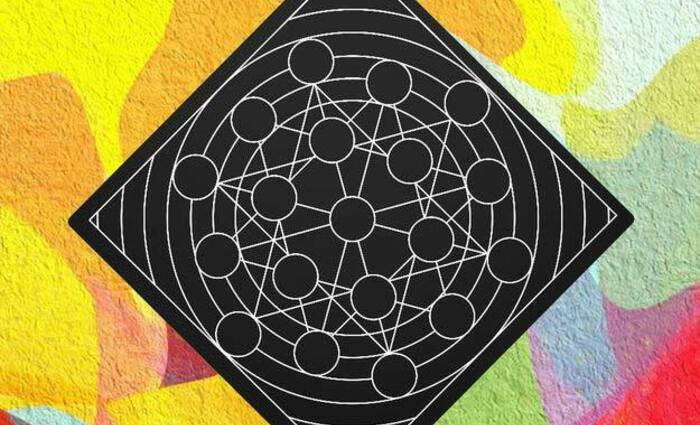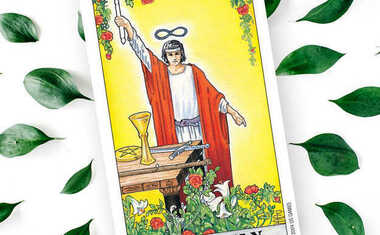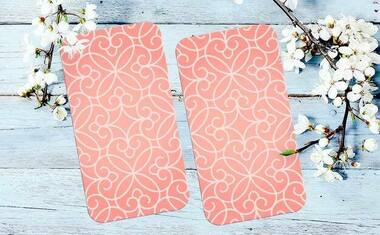
The Mandala Tarot: A Different Type of Reading
Explore the origins and deeper meaning of this Tarot spread
By A.T. Mann
Mandala is an Eastern term for a consecrated place, a map of the cosmos, or a geometric projection of the world reduced to an essential pattern. A mediator uses a Mandala to identify with the forces of the universe and to collect their power. Mandala images bring heavenly essence down into manifestation. A Mandala is a reflection of the universe.
The classical form of the Mandala is like a circular, unfolded lotus flower, symbolic of creation as it blossoms upon the celestial waters. The Mandala is a support for mediation, an external instrument to provoke and procure internal visions. By using Mandalas, the mediator can concentrate the mind and rediscover the way to reach the secret inner reality.
The Mandala is, above all, a diagram of concentric circles, a protected space within which images of the archetypal world of paradise are represented as an ideal landscape such as the holy Mount Meru or the ideal city.
Embrace the power of the Mandala Tarot spread NOW »
Mandala spread
The symbols of Tarot are combined within each Major Arcana card to present a meaning which is directly perceived by the unconscious and has a powerful effect there, whether or not the conscious mind can understand the meaning of the symbol.
The relative position of the specific symbols of each card is also very important in the Mandala Astrological Tarot. The primary geometric divisions of the cards describe the area in which a particular symbol is active, as is the case in all Mandala diagrams. The primary divisions are a reflection of the places around the astrological horoscope as seasons of the year and times of the day.
The primary division is into upper and lower halves. The upper half is the conscious, objective, and masculine domain of the Sun, while the lower half is the unconscious, subjective, and feminine domain of the Moon.
The secondary division of the circle is into right and left halves. In Mandala symbolism, the right side is instinctive, artistic, intuitive, and holistic, while the left side is linear, logical, analytical, mathematical, verbal, and concrete. Astrologically, the left side is the domain of the personality and the right side is the outside world.
Embrace the power of the Mandala Tarot spread NOW »
Card images
The Mandala Astrological Tarot presents each Tarot card as a Mandala image -- circular images upon square cards. Each card may be placed with any one of its four sides to the top. The Major Arcana cards contain many images arranged in Mandala format, as though they were ideal images of the perfect world of archetypes. Each card leads from the periphery to the center, wherein balance reigns, just as in the human psyche. The form of the cards is conducive to wholeness.
The square shape of the cards is very important. Typical Tarot cards are rectangular like playing cards. Since the card images have a top and bottom, many people describe the meaning of each card in its upright position as positive and when reversed as negative. The process of enlightenment is centrally concerned with eliminating the distinction between positive and negative. The square cards provide a solution to this dilemma.
Embrace the power of the Mandala Tarot spread NOW »
Card orientations
The four cardinal orientations at any location are above, below, right, and left. The astrological significance of these cardinal positions provides qualifications for the Tarot card meanings.
A card in the upright position shows that one's conscious of the quality described. If the Fool, its upright position implies one who is not only innocent but knows that he is innocent.
A card in the reverse position is unconscious of its quality. The reversed Fool would be someone who was innocent but unaware of being so, therefore truly embodying a fool.
When the upper title of a card is to the left, toward the eastern horizon where the Sun rises, the quality of the card is carried in the personality and acted out. Thus, the Fool in this position would be one who acts like an innocent.
When the upper title of a card is to the right, toward the western horizon where the Sun sets, the quality of the card is derived from, or a projection on to, someone else in the outside world, such as one's partner.
Each card therefore has not just one, but four meanings based upon its position. The symbols and images of each card also change position, creating many permutations of all cards in the deck. Although this is a degree of subtlety which is not required in the beginning, it provides great depth and accuracy later on in your use of the Mandala Astrological Tarot.



